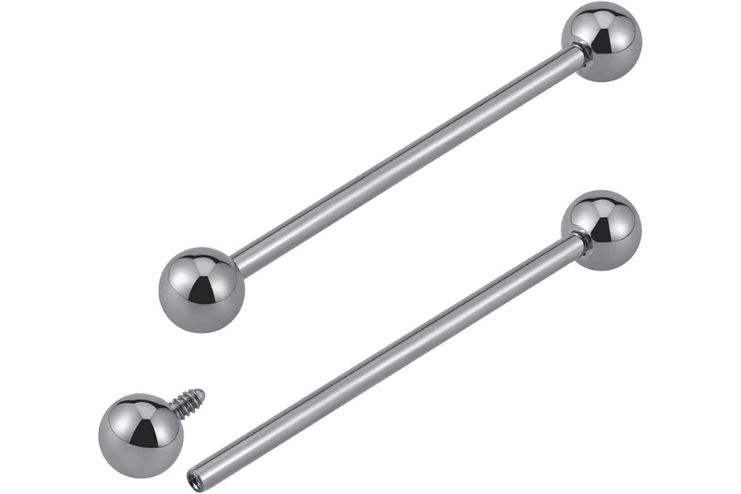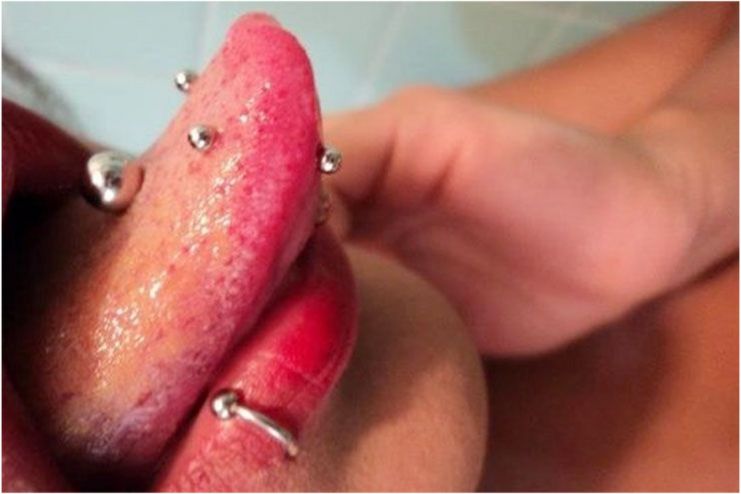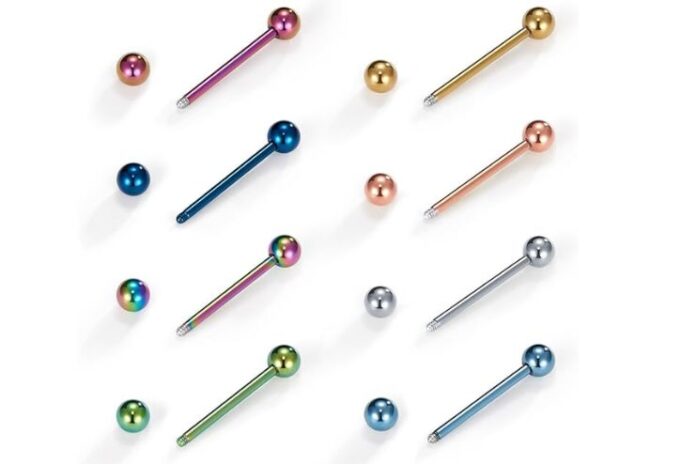Affiliate Disclaimer
Some links in this article are affiliate links. We may earn a small commission if you make a purchase through these links, at no extra cost to you. We only recommend products we find useful to our readersBody piercing has emerged as a prominent fashion trend, with snake eye piercing, also known as tongue piercing, gaining significant popularity. Many people worldwide opt for tongue piercings to enhance their appearance.
However, it’s important to note that tongue piercings can sometimes pose serious health risks if not done or cared for properly.
Here, we provide essential information about the potential problems associated with infected snake eye piercings and the steps and precautions to consider before getting your tongue pierced.
What is Snake Eye Piercing?
Snake eye piercing is a unique tongue piercing technique and should not be confused with snake bite lip piercing. This trend has recently gone viral, with a growing number of people opting for this distinctive style of tongue piercing.
In a snake eye piercing, the tongue is pierced horizontally across the tip using a small barbell. The barbell’s balls are visible on either side of the tongue, giving the appearance of snake eyes, which is how the piercing gets its name.
How is Snake Eye Piercing Done?
 To properly perform a snake eye piercing, finding an experienced and reputable piercer is crucial. This ensures that the process is done safely and correctly. A professional piercer will first examine your tongue to determine whether it suits this type of piercing.
To properly perform a snake eye piercing, finding an experienced and reputable piercer is crucial. This ensures that the process is done safely and correctly. A professional piercer will first examine your tongue to determine whether it suits this type of piercing.
- Since the structure of the tongue varies from person to person, the piercer will check for prominent blood vessels. If the blood vessels are highly visible or in a critical position, proceeding with the piercing may not be safe. Remember, your health and safety should always take precedence over the piercing.
- If your tongue is suitable, the piercer will numb the area using an anesthetic, often lidocaine. However, the choice of anesthetic depends on the piercer performing the procedure.
- Next, blotting tissue is applied to the tongue to absorb any saliva on the surface. Two small dots mark the piercing site, which act as guides for the accurate placement of the jewelry.
- The jewelry used is typically a 14g titanium barbell, though a 16g barbell may also be suitable depending on the size of your tongue. Your piercer will advise you on the appropriate size and type of jewelry.
- The piercer will use clamps to hold the tongue steady by gently compressing it from the sides. This helps push the tongue together and minimizes the risk of hitting major veins.
- Finally, a piercing needle creates the hole, and the barbell is inserted through the tongue. The procedure is completed by securing a ball on each end of the barbell.
How to Take Care of Snake Eye Piercing?

After getting a snake eye piercing, it’s common to experience significant pain along with light bleeding, swelling, bruising, and tenderness during the initial healing period. Proper aftercare is essential to alleviate discomfort and ensure the piercing heals safely.
Below are some helpful tips for managing pain and caring for your snake eye piercing:
Use Ice to Reduce Swelling
Drinking plenty of cold water and using ice chips can help reduce swelling. However, it’s important to avoid freezing your mouth with ice chips. Let the ice chips melt in your mouth instead of sucking on them to avoid discomfort.
Avoid Foods That Are Salty or Acidic in Nature
Eating acidic, salty, or spicy foods after getting your tongue pierced can cause a burning or stinging sensation around the pierced area. It’s best to avoid these types of foods during the healing process.
Do Not Consume Potentially Harmful Foods
Avoid consuming alcohol, tobacco, and caffeine, as they can hinder the healing process. Additionally, refrain from oral sexual contact, such as French kissing, during the initial healing phase.
Expect Discharge
It is common to experience some white-colored discharge after getting your tongue pierced. However, ensure it is not pus, which could indicate an infection.
Rinse Your Mouth
Rinse your mouth regularly with an alcohol-free mouthwash for about 60 seconds at least 4-5 times a day, especially in the morning and before bedtime. This helps prevent infections and maintain oral hygiene.
Clean the Piercing
Clean the pierced area with a saline solution made from sea salt 2-3 times daily. You may also use mild antibacterial soap to clean at least twice a day. Ensure the piercing is dried thoroughly to eliminate bacteria. Use clean tissue paper instead of towels to maintain hygiene.
Change Your Jewelry After the Initial Swelling Subsides
Once the initial swelling has gone down, consult your piercer about changing to a shorter piece of jewelry. Your piercer will check whether your tongue is ready for the change.
Choose the Right Style
When changing jewelry, select a style made from a material you are not allergic to or sensitive to. Prioritize comfort and safety over aesthetics.
Snake Eyes Piercing Infection and Complications
 Some of the common infections and complications associated with snake eye piercing are listed below:
Some of the common infections and complications associated with snake eye piercing are listed below:
Tongue Tenderness and Swelling
Tenderness and tongue swelling are among the most common symptoms of an infection. Although some swelling is normal after a snake eye piercing, difficulty swallowing or persistent discomfort should prompt you to consult a doctor immediately.
Inflammation and Redness
Inflammation and redness are other common signs of infection. While mild redness and swelling typically subside within a few days, worsening symptoms or painful inflammation may indicate a more serious problem that requires medical attention.
Bleeding
Bleeding can occur after a snake eye piercing. While some initial bleeding is normal, excessive or prolonged bleeding without signs of clotting can lead to health complications. Experts advise seeking medical assistance if this occurs.
Conclusion
Snake eye piercing is a popular expression of bold trendiness, yet it’s critical to be well-informed and properly prepared. Be safe by knowing where to go and by whom to get pierced. Understanding the possible complications during the process ensures your safety.
Proper aftercare will significantly decrease the chance of infections and keep your piercing healed and healthy.
While snake eye piercing may be a distinctive way to express your style, it is necessary to be careful about the symptoms of infection and seek medical care if necessary. By following guidelines for care and maintaining hygiene, you can enjoy your piercing while keeping your health safe.
-
Aug 2017Written by Prajakt K
-
Jan 2025Edited by Lakshmi Gayatri
In this Article















